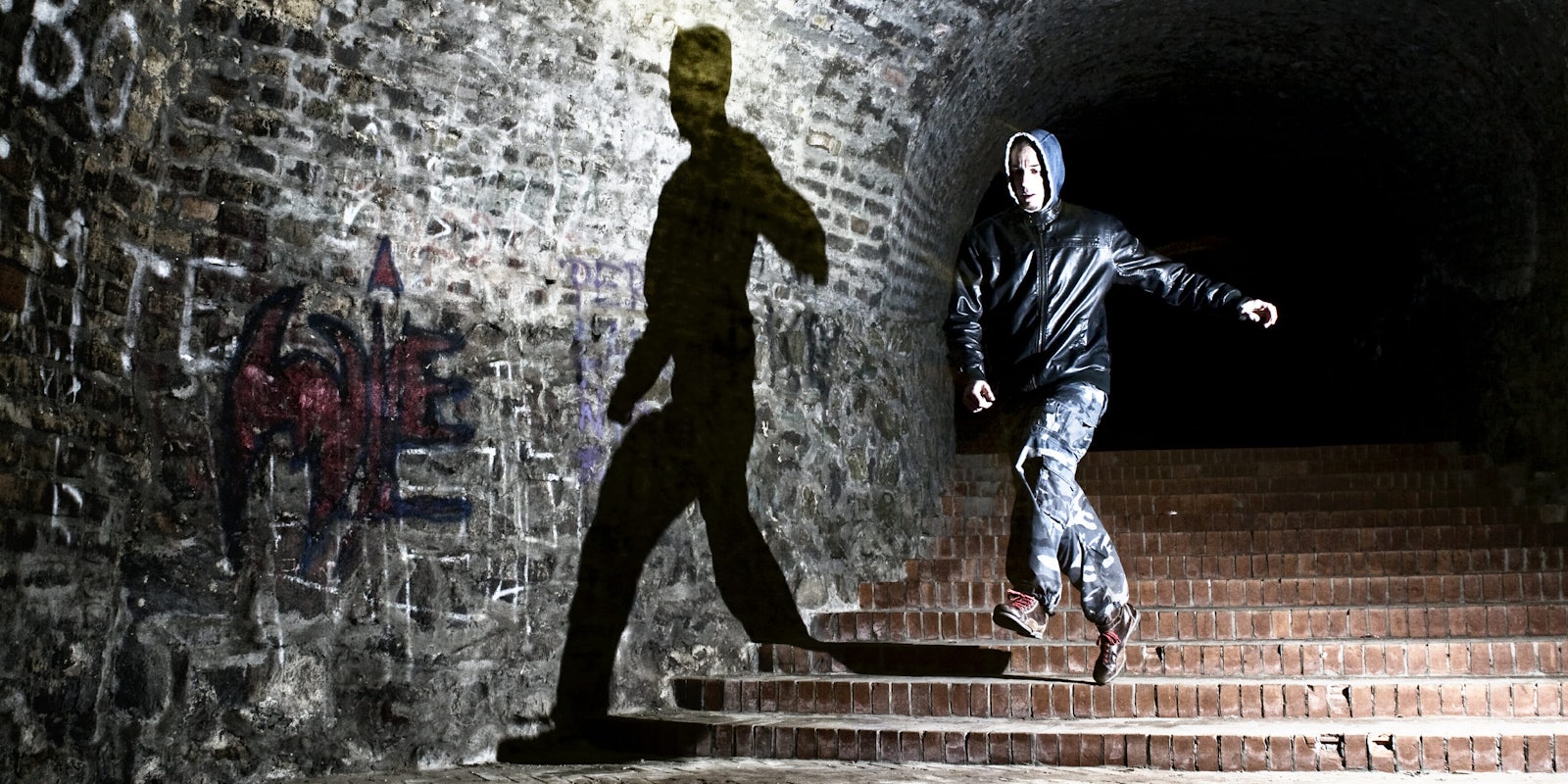High-crime neighborhoods in Baltimore, which happen to be predominantly black and poor, are policed differently from white, upper-class neighborhoods. And to some degree, that’s legal.
In 2000, the U.S. Supreme Court decided in Illinois v. Wardlow that if a person in a high-crime neighborhood runs in “unprovoked flight” from a police officer, then reasonable suspicion has been met. The officer has the right to chase, stop and frisk. In other words, officers are expected to follow their hunches.
Fast forward to today, and foot pursuits have become a common sight on the streets of many inner cities, with sometimes deadly results: See Walter Scott in North Charleston, South Carolina; Freddie Gray in Baltimore; and Jay Cook in our upcoming episode of Reveal, which premieres Saturday.
But in September, the Massachusetts Supreme Judicial Court put the Wardlow decision into context. The court said that, yes, environment should be taken into account—but not solely through the lens the Supreme Court used when it decided Wardlow.
In Commonwealth v. Warren, the court said, “Such an individual, when approached by the police, might just as easily be motivated by the desire to avoid the recurring indignity of being racially profiled as by the desire to hide criminal activity.”
The court also said a police officer is not justified in making a stop if his or her evidence is based solely on the fact that the person running is in a high-crime neighborhood.
“Evasive conduct in the absence of any other information,” the judges wrote, “ … is insufficient to support reasonable suspicion.”
Renée Hutchins, a law professor at the University of Maryland, says this decision “ripped the curtain back to look at what some police officers have been doing to large numbers of black and brown men and women” – some of it legally justified by Wardlow.
The Massachusetts judges cited a 2015 report by the ACLU and Boston Police Department data. Both reports showed that black people in the city were disproportionately and repeatedly targeted by police. The ACLU report found that between 2007 and 2010, 63 percent of police encounters were with black people, even though the city’s black population was about 25 percent at the time.
However, after the court ruling, Boston Police Commissioner William Evans told local public radio station WBUR: “We do a super job out there; we have a low homicide rate. I stand 100 percent behind what they do. We target the kids who are driving the violence in the neighborhoods that are violent.”
In August, a month before the Massachusetts court decision, the U.S. Justice Department released a report on the Baltimore Police Department. It found a widespread pattern of unconstitutional stops, frisks and arrests. The report said that rather than the work of a few bad apples, the abuses were systemic.
And events seemed to bear this out in March, when seven Baltimore officers were indicted on federal racketeering charges. The seven made up a special unit tasked with rooting out gun activity in the city. Federal prosecutors say the officers stole money, property and drugs from residents, some of whom were detained on the street and in traffic stops. They also accuse officers of submitting false incident and arrest reports.
The Baltimore Police Department cooperated with the FBI in its investigation, and its commissioner has pledged that the partnership will continue.
But after years of humiliation and harassment, will black residents of Baltimore stick around to see how things play out when they see a cop?
Or will they run?

This story was produced by Reveal from The Center for Investigative Reporting, a nonprofit news organization. Learn more at revealnews.org and subscribe to the Reveal podcast, produced with PRX, at revealnews.org/podcast.


